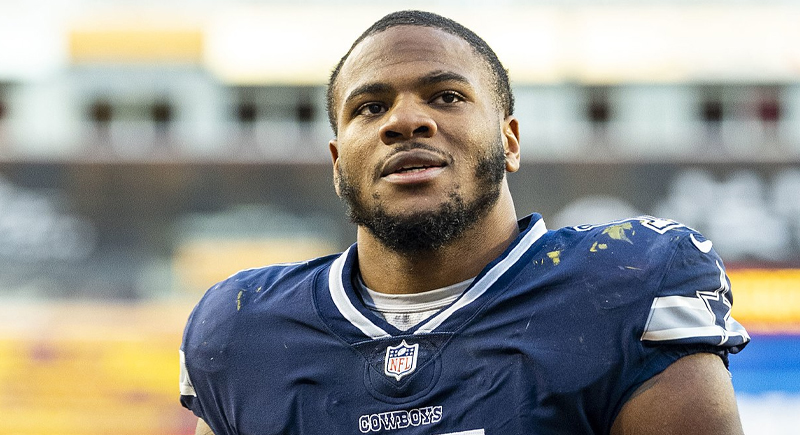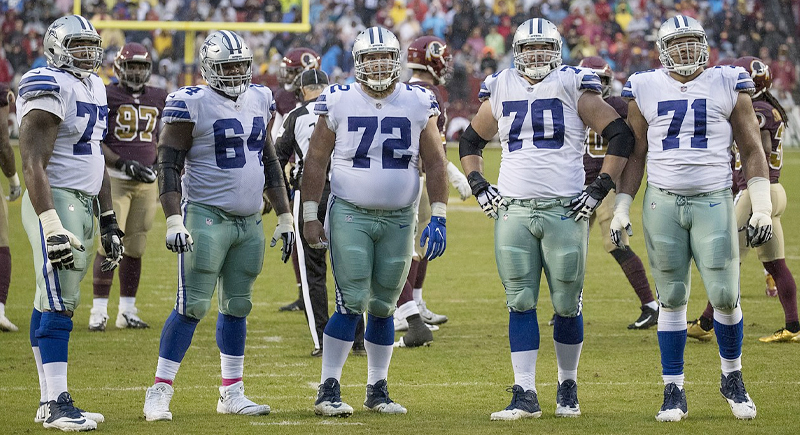A Look at How Much an NFL Player Actually Takes Home After Taxes
Fans love to talk about NFL salaries. Multi-million-dollar deals make headlines, and every record-breaking contract sets off social media debates. However, those big numbers don’t tell the full story, especially after taxes. A large chunk of a player’s earnings disappears before it ever hits their bank account.
Federal income tax takes the first cut, followed by state taxes, and then the “jock tax,” which charges athletes for games played in different states. Once those deductions stack up, the real paycheck looks much smaller than the headline figure.
The Tax Blitz Hits Hard

Image via Wikimedia Commons/All-Pro Reels
Every NFL player starts by facing the federal government’s top bracket: 37% on income above $626,350. Further Medicare taxes, Social Security contributions, and deductions for agent fees and 401(k) contributions wipe out more than a third of most contracts. Then comes the state tax maze.
In states like California, athletes face a 13.3% marginal tax rate, the highest in the country. That means a quarterback making $20 million in Los Angeles can easily owe more than $10 million in combined federal and state taxes. Meanwhile, a teammate playing in Texas, where there’s no state income tax, would save roughly $2.5 million on the same salary. The disparity is massive, and it only gets worse once players hit the road.
The same player can lose or save millions simply by playing for a team in the right state. In 2025, Green Bay’s newest star, Micah Parsons, found out how much location matters. After leaving the Cowboys for the Packers, Parsons signed a $180 million deal with $120 million guaranteed, which was enough to make him the highest-paid non-quarterback in NFL history. However, Texas doesn’t tax personal income, and Wisconsin does; that difference costs him roughly $3.6 million per year.
According to analysis by SmartAsset, players on teams in California, New York, and Minnesota regularly lose close to half their income to taxes. In contrast, athletes in the AFC South, where three of the four teams play in tax-free states, retain a significantly larger share. Houston Texans players have an average state income tax rate of just 0.26%, while Jacksonville Jaguars players enjoy both low state tax and relatively light sales and property taxes.
The Jock Tax Shuffle

Image via Wikimedia Commons/Keith Allison from Hanover, MD, USA
Playing football also comes with travel, and that travel means tax returns. Every state that hosts an NFL game wants a piece of the visiting team’s income. The “jock tax” essentially requires players to pay taxes in each state where they perform. It’s calculated by service days, meaning practice time counts too. A typical player can owe taxes in eight to ten states per season, sometimes even more.
For example, a Green Bay Packer will pay Wisconsin’s 7.65% tax rate on home games and then owe portions to other states where away games occur. By contrast, players for the Dallas Cowboys or Jacksonville Jaguars face fewer complications since their home states (Texas and Florida) don’t tax wages. That’s one reason so many players enjoy playing in the AFC South division. Fewer state taxes mean more cash left after the final whistle.
The Real Take-Home Pay
Taxes have influenced player movement for decades. Tyreek Hill admitted his decision to join the Miami Dolphins in 2022 was “a grown-up choice” driven partly by Florida’s zero-percent state income tax. Trevor Lawrence, the Jaguars’ quarterback, earns about $55 million in 2025 but avoids the millions in extra taxes he would owe in New York or California.
Meanwhile, players in California’s franchises, like the Rams or 49ers, hand over an average of 11.2% in state taxes, more than any other team in the league. On a $50 million contract, that’s more than $5 million extra in state taxes alone. It’s enough to sway a free agent who’s choosing between two similar offers. That’s why agents and financial advisors spend as much time studying tax tables as they do game stats.
When all the math settles, most NFL players lose between 45% and 50% of their gross pay to taxes and deductions. A star making $20 million can expect to actually keep somewhere around $10 million to $11 million, depending on where they play. Even for rookies earning the league minimum of about $915,000, taxes, fees, and union dues can cut that down to nearly half.